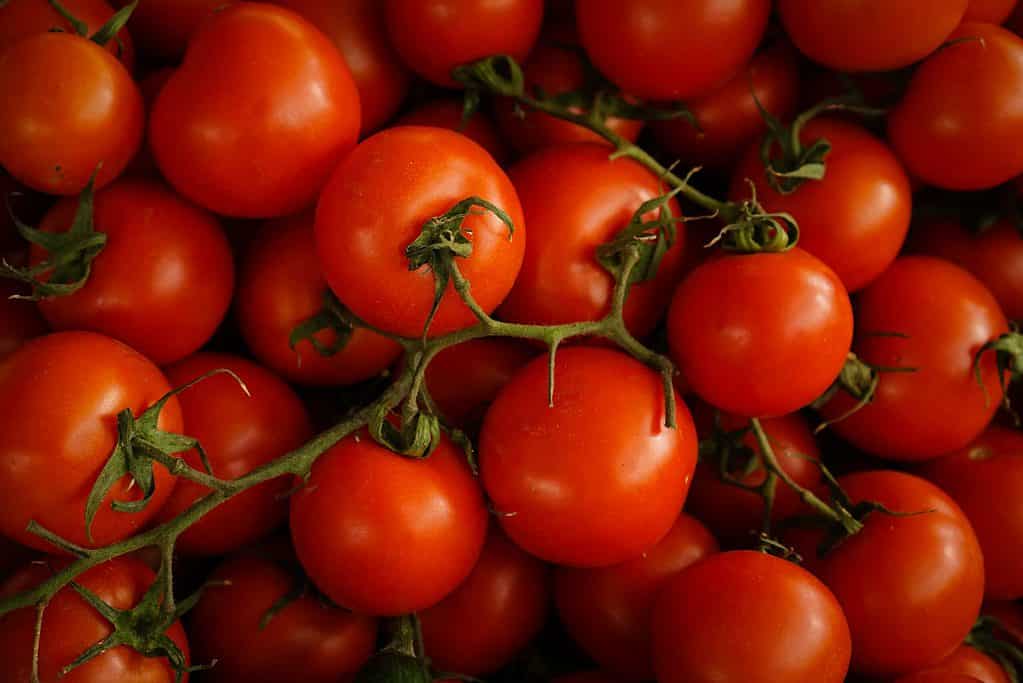The inviting and delicious pizza is considered a quintessentially Italian dish, but many other cultures around the world have also created pizza — or pizza-like dishes. Depending on what you call ‘pizza’ (and how strict you are with the name), you could trace pizza back to Neolithic cultures that started experimenting with flatbread and incorporated a variety of ingredients into it.
Even if you apply the strictest definition to it, pizza is over 1,000 years old, and indeed, the name ‘pizza’ was mentioned as early as 997 AD. Even modern pizza is older than 200 years, but from its early days, its transition, and the key innovation that made pizza what it is today, this remarkable dish has undergone quite a lot of changes.
So grab a slice and let’s take a look at the history of pizza.

Image via Pixabay.
Pizza origins
There’s some debate as to where the term “pizza” comes from. One of the prevailing theories, however, is that it comes from the Latin pitta, a type of flatbread. And, to the best of our knowledge, that is exactly how pizza started out: flatbread with extra toppings meant to give it flavor.
The Romans loved their panis focacius, what we today call focaccia, a type of flatbread similar in style and texture to pizza, to which toppings are added. But the history of pizza goes even before the Romans.
Some 7,000 years ago, over 2,000 years before the Great Pyramid in Egypt had been built, the inhabitants of Sardinia, a large Italian island in the Mediterranean Sea, leavened bread. Pizza is also leavened, so this technique was the precursor to pizza.
But people in and around today’s Italy weren’t the only ones who had this idea.
Ancient people loved their bread, and it’s not hard to see why. Grains keep relatively well in a world bereft of refrigerators, and bread is one of the more enjoyable ways to eat it. It was also among the cheaper foodstuffs, generally, as grain is easy to produce, ship, and process in large quantities. Finally, bread is also quite dense in protein, carbohydrates, fiber, and calories — especially whole-grain bread, which our ancestors ate. Bread doesn’t particularly shine in the taste department, however. So it’s easy to carry and it will get you full, but it’s not very exciting on the palate; unless you give it an extra twist.
This is perhaps why, as Genevieve Thiers writes in the History of Pizza, soldiers of the Persian King Darius I “baked a kind of bread flat upon their shields and then covered it with cheese and dates” as early as the 6th century B.C. The Greeks (they used to fight the Persians a lot) seem to have later adopted and adapted this dish for their own tables.
So the exotic type of pizzas that incorporate cheese and fruits like dates may not be a great novelty — but rather, they may be a return to the classic time of pizza, before it was even called pizza.

Image credits Jason Goh.
It was pretty common for ancient Greeks to mix olive oil, cheese, and various herbs into their bread — again, all in the name of flavor. But it seems that contact with Persian soldiers added a twist or two to the tradition, according to Thiers, and Greece started baking “round, flat” bread with a variety of toppings such as meats, fruits, and vegetables.
One interesting bit of evidence of this culinary development comes from the Aeneid, an epic poem written around 30 or 20 B.C. In the work, Aeneas and his men (who were running away from Greek-obliterated Troy) receive a prophecy/curse from Celaeno (queen of the harpies). Caleano told him that his group will “have reached [their] promised land” when they “arrive at a place so tired and hungry that [they] eat [their] tables”. When the party came ashore in mainland Italy they gathered some “fruits of the field” and placed them on top of the only food they had left — stale round loaves of bread.
The use of hardened bread or crusts of bread in lieu of bowls was quite common in antiquity and the middle ages. So the group’s actions can be seen as them putting the food — the fruits of the field — on a plate, or a table, rather than being used as a topping. Still, famished, the adventurers quickly ate the plants, and then moved on to the ‘plates’ of bread. Aeneas’ son, Ascanius, then remarks that the group has “even eaten the tables” (“etiam mensas consumimus!” Aeniad Book IV), fulfilling the prophecy.
But all this was pizza-like, and not exactly pizza. In order to get to that, we have to fast forward a few centuries.

The origin of Pizza in Italy
The ‘pizzas’ we’ve talked about up to now are far from unique. Cultures around the world have developed their own brand of goodie-laden bread. Flatbreads, naan, and plakountas are all early preparations that could be considered cousins to the modern pizza, and they sprung up from ancient Greece to India, from Persia to Egypt. However, it would be kind of a stretch to call them pizza; they’re certainly not what you’d expect to see inside a pizza box today.
As time passed, bakers, who had been making flatbreads for centuries, began to experiment and to top their creations with a variety of ingredients. They especially used fatty additions like olive oil and cheese. But it wasn’t until tomatoes came to Europe that the true pizza could finally be born.
Tomatoes, one of the key ingredients in pizza, are native to the Americas, specifically the Andean region of South America. The tomato plant was domesticated over thousands of years by the indigenous people of what is now Peru, Ecuador, and Mexico.
It was an important part of their diet, but when European explorers arrived in the Americas in the 16th century, they encountered the tomato with suspicion. Botanists recognized it as a relative of the poisonous belladonna and deadly nightshade, and at first, in Europe, tomatoes were grown as decorative plants.
But it wasn’t all that long until Europeans also started eating tomatoes.
As time passed, the tomato began to gain popularity in Europe, especially in Italy. By the 18th century, tomatoes had become an essential ingredient in Italian cuisine and were being used to make a variety of dishes, including pizza.
One Greek settlement would become the forefront of pizza as we know it: Naples. The city was founded by Greek colonists in the shadow of Vesuvius around 600 B.C. Naples was a thriving waterfront city, it had a thriving culture and, technically at least, an independent kingdom.
The city was famous for its many lazzaroni, or working poor. The lazzaroni needed inexpensive food that could be consumed quickly, for the lazzaroni had neither the time nor the money to invest in their meals. Many street vendors and other informal “restaurants” catered to their need, primarily offering flatbreads with various toppings (as per the area’s Greek heritage).
By this time, Naples’ flatbreads featured all the hallmarks of today’s pizzas: tomatoes (which were brought over from the Americas), cheese, oil, anchovies, and garlic.

Image in the public domain, via Wikimedia.
Still, the dish wasn’t enjoying widespread appeal or recognition at this time. Pizza was considered a poor man’s dish, partially due to the lazzaroni, and partly due to the fact that tomatoes still carried a stigma, and some feared them to be poisonous. It was especially the wealthy that considered them toxic, and for a particularly ironic reason.
It was common for wealthy people at the time to dine from plates made of pewter, a malleable lead alloy. Tomatoes, being somewhat acidic, would leach lead out of the plates into food — which of course, was toxic. The tomatoes were blamed, and that made them cheap.
The lazzaroni were poor and hungry, so the tomato was right up their alley. Luckily for the lazzaroni, pewter plates were expensive, so they weren’t poisoned.
“Judgmental Italian authors often called [the lazzaroni’s] eating habits ‘disgusting,'” Helstosky notes.
So for a long time, pizza was a food for the poor, and now a particularly fashionable type of food. But pizza got its big break around 1889.
After the kingdom of Italy unified in 1861, King Umberto I and Queen Margherita visited Naples, Thiers writes. It’s not exactly known how but they ended up being served ‘pies’ made by Raffaele Esposito, often hailed as the father of modern pizza. Legend has it that the royal pair was bored with the French cuisine they were being offered, although Europeans love bad-mouthing their neighbors and especially their neighbors’ foods, so that may not be completely factual.
“He first experimented with adding only cheese to bread, then added sauce underneath it and let the dough take the shape of a large round pie,” Theirs explains.
Esposito is said to have made three of his pies/pizzas. The story goes that the one the Queen favored most showcased the three colors on Italy’s flag — green basil, white mozzarella, and red tomatoes. Whether this was a coincidence or by design, we’ll never know. But you can pick the story you like most. Esposito named his pizza “Margherita” in honor of the Queen, although today it’s more commonly referred to as ‘cheese pizza’.
It’s a good story, but the Pizza Margherita already existed. Pizza places already existed in Naples in the 1700s. According to one report, “The most popular and famous pizzas from Naples were the ‘Marinara’, created in 1734, and the ‘Margherita’, which dates from 1796-1810. “
The Margherita was indeed presented to the Queen of Italy upon her visit to Naples in 1889, “specifically on account of the colour of its seasoning (tomato, mozzarella and basil), which are reminiscent of the colours of the Italian flag.”
The stories that originate around pizza may be hard to untangle from historical fiction, but one thing is clear: from there, pizza has only reached greater heights.
Modern history of pizza
By 1900, pizza had established itself as an iconic Italian dish, first in Italy and later within Europe. The Italians loved it regardless of social class by then, although it still carried a stigma in some regions as a poor man’s food. But outside of Italy, pizza was still not a classic.
At the time, there was also another important change regarding pizza: until the late 19th or early 20th century, the dish was usually sweet, not savory. Earlier versions that were savory resembled the flatbreads now known as schiacciata. Yes, pizza has a long history of being a sweet dish — maybe pineapple isn’t such blasphemy after all.
In fact, a renowned early 20th century food author, Pellegrino Artusi, gives three recipes for pizza in his cookbook, La Scienza in cucina e l’Arte di mangiar bene — and all of them were sweet. After the feedback of some readers, Artusi added a typed sheet in the 1911 edition (discovered by food historian Alberto Capatti), bound with the volume, with the recipe of “pizza alla napoletana,” which had mozzarella, tomatoes, anchovies, and mushrooms.
But just as pizza started becoming ubiquitously savory, it also started becoming more popular in Europe.
After pizza became popular in Italy in the 18th and 19th century, it also started becoming more popular in Europe. This was largely a result of a combination of historical events. Cultural exchanges deepened as the migration of people happened more and more. As travelers and merchants arrived to Italy and moved to other places, they fell in love with pizza’s simple allure.
America’s love of pizza also began with Italian immigrants and was later propelled by soldiers who fought — and ate — in Italy during the Second World War. When Italian immigrants moved to the US, they brought with them their love of pizza, and as cities became urbanized and more fast-paced, pizza became even more desirable: it was easy to make and easy to consume on the go.
It’s remarkable just how international pizza is. From origins in Persia and ancient flatbreads made by various cultures, to the tomatoes grown in the Americas, to the Italians who made it what it is today and helped spread it all around the world.
From its humble beginnings as a simple flatbread, pizza has become a global phenomenon, and a beloved food enjoyed by millions of people every day. It’s fair to say that although Persia’s soldiers couldn’t conquer the world, their food certainly did.
Types of pizza
Because pizza is such a versatile dish and you can make it with practically everything, there’s virtually no end to the different types of pizza you can create. Still, some are more common and have kept most of their unique flavor and style:
- Margherita Pizza: As mentioned, this originated in Naples, Italy. Margherita pizza is a classic and simple pizza made with tomato sauce, mozzarella cheese, and fresh basil. The combination of red, white, and green ingredients is said to represent the colors of the Italian flag — though as we said, the factuality of the legends around the margherita pizza is debatable.
- Pepperoni Pizza: Pepperoni is a popular topping in America and is made from a blend of spices, seasonings, and cured meat. This type of pizza is a staple in American households and is known for its spicy and savory flavor.
- Pizza Napoletana: the red-white-and-green a style of pizza that is linked to the very history of this dish. Made with tomatoes and mozzarella cheese, this is a true classic.
- Sausage Pizza: Similar to pepperoni pizza, this type of pizza is topped with Italian sausage and cheese, providing a rich and meaty flavor.
- Veggie Pizza: This type of pizza is made for those who prefer a vegetarian diet and is topped with a variety of fresh vegetables, such as mushrooms, bell peppers, onions, and olives.
- Hawaiian Pizza: This pizza originated in Canada and is topped with ham, pineapple, cheese, and tomato sauce. The sweetness of the pineapple provides a unique balance to the savory flavors of the ham and cheese.
- BBQ Chicken Pizza: This pizza combines the flavors of barbecued chicken, red onion, mozzarella cheese, and barbecue sauce, making for a sweet and tangy pizza experience.
- Spinach and Feta: This pizza is topped with sautéed spinach, crumbled feta cheese, and mozzarella cheese.
- Quattro Formaggi: A pizza topped with a combination of four different cheeses, typically mozzarella, gorgonzola, fontina, and Parmesan. This bold flavor has become a favorite of many and comes in different variations of cheese.
- Margherita with Prosciutto: This type of pizza is a variation of the Margherita pizza and is topped with thin slices of prosciutto, adding a salty and savory flavor to the dish.
- Quattro Stagioni: A pizza that represents the four seasons and features four different toppings, each one representing a different season. The toppings can vary, but typically include mushrooms and olives for autumn, ham and artichokes for winter, tomatoes and basil for spring, and prosciutto and arugula for summer. This is typically regarded as a forgotten classic of Italian pizza.
No doubt, pizza has undergone quite a journey, and it’s still changing in many ways. As new flavors and combinations of flavors emerge, and as our lifestyles continue to change (more and more people are looking for healthier options, for instance), pizza will also continue to change.
But it’s unlikely to go away: no doubt, with its rich history and rich flavor, pizza may change, but it’s here to stay.







